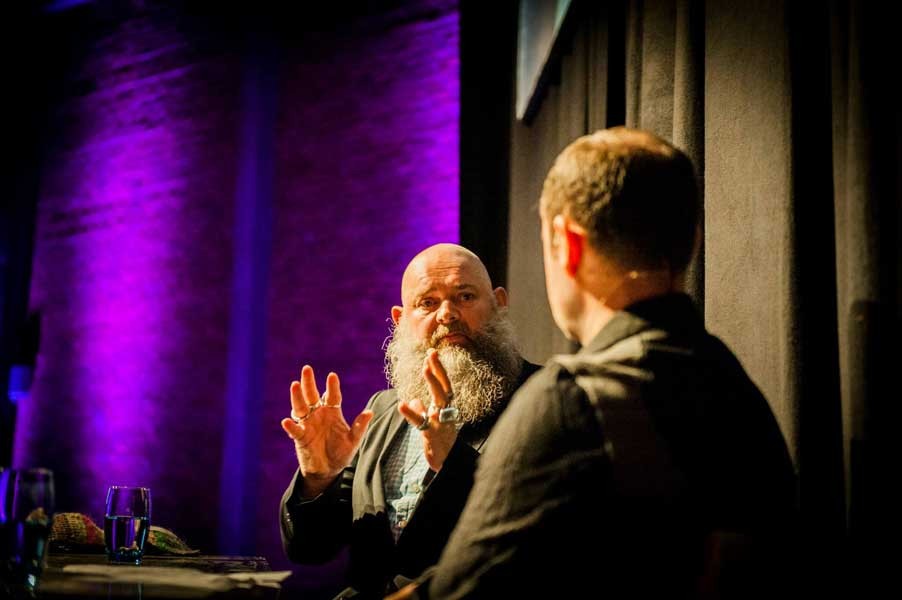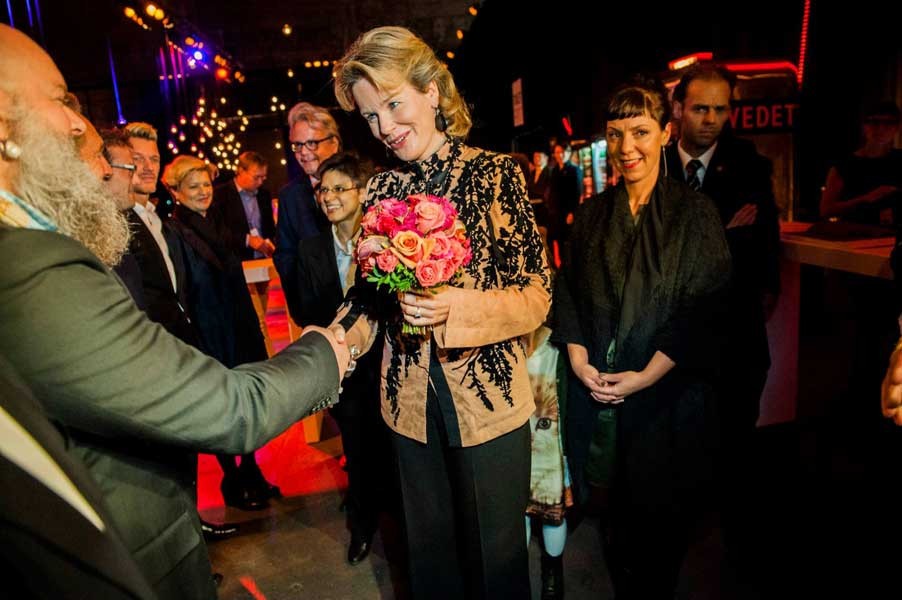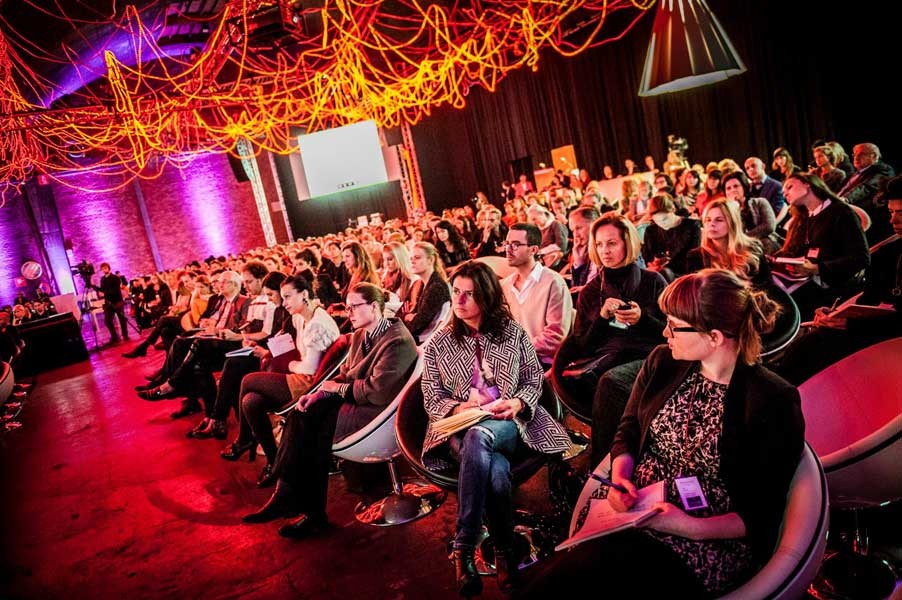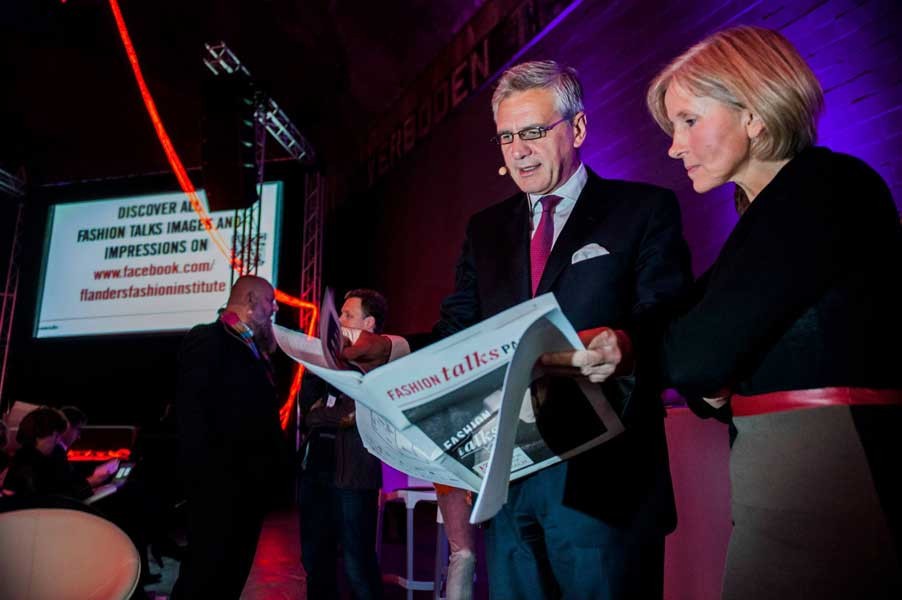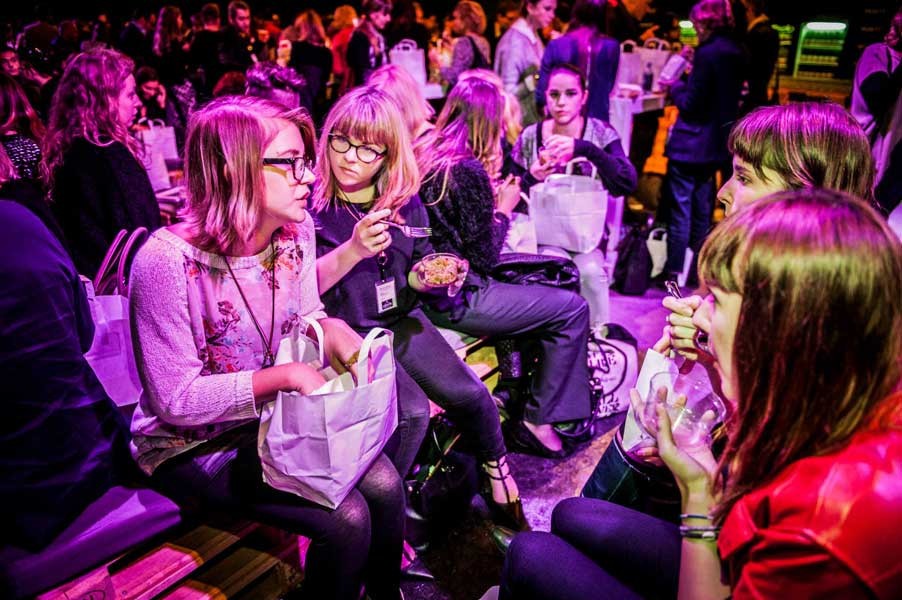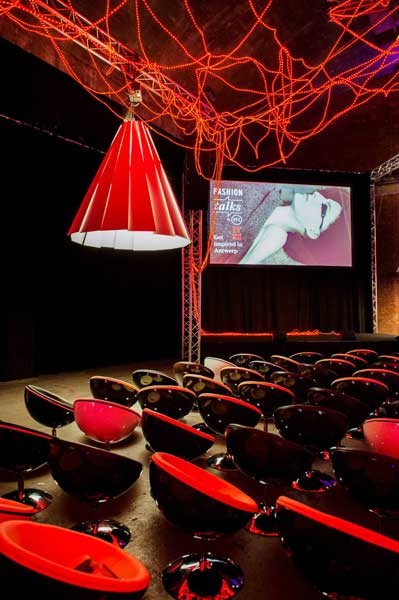In anticipation of its fifteenth anniversary later this year, the Flanders Fashion Institute (FFI) in partnership with Design Platform Flanders hosted its debut Fashion Talks conference on October 17th at wonderful Antwerp’s riverside multipurpose venue Hangar 29 Waagnatie. Keen to stimulate and promote an increase in successful entrepreneurship, the FFI aimed to unite the fashion and related industries by presenting a range of national and international speakers tasked with providing updated industry information and inspiration, while supplying a vital platform for networking opportunities.
Kris Peeters, the Minister-President of Flanders, opened proceedings by observing how significant an export fashion is to the Flemish economy, courtesy of its annual €7 billion contribution, before sharing his view that fashion is reliant on more than its artistic immediacy – apart from its designers and models, the companies researching and distributing collections add valuable substance of their own. He handed over to a lively and perceptive exchange between Eugene Rabkin, the Founder of fashion community stylezeitgeist.comand Editor of its biannual print and online publication and Walter Van Beirendonck, member of the celebrated Antwerp Six group of native designers while being internationally recognised in his own right.
Walter broke away from corporate ownership in 2000 due to valuing his own independence over monetary demands. Although his company has greatly scaled down so has his thinking about his label, freed as it is from the pressures felt beforehand. He has swapped making commercial products for collaborating with interesting people he has respect for, a process granting his mind the freedom to evolve now his business is removed from major fashion house ownership, institutions he considers responsible for the lack of any honest, critical exchange in fashion journalism over collections, given a script is imposed by them. With their power the grand labels control not just the industry but its wider image.
Now Walter does just as he pleases, which includes drawing on his formative student days when honing his current perspective. Graduating from Antwerp’s Royal Academy of Fine Arts in 1980, a time when the school struggled for wider recognition, capturing the attention of buyers was more difficult than for students nowadays. With their combined talent the Antwerp Six thrust themselves and the institution to acclaim. Reminiscing on this period he acknowledged how difficult it is to be original, but how important learning and training are in becoming so. For him a college strives to coax out a student’s signature, from which their deepest creativity is found. Satisfied now he’s found his true identity, Walter hopes to better engage with the press when showing his clothes. Through establishing a cogent aesthetic universe throughout a show, his vision is shared in a moment of communication with those he recognises are free to judge according to their own taste, rather than being swayed by instruction or fear.
This was an inspiring way to start the all-day event. Changing track entirely was Pierre Mallevays, Founder and Managing Partner of retail and luxury goods sector corporate advisory firm Savigny Partners LLP, who underlined the principles ensuring the longevity of the fashion business and those labels intent on remaining on the course Walter took great pleasure in leaving and whose quote is gracing this article’s title. This presentation was never going to be about clothes, style or whatever the most immediately appealing aspect of the industry might be, although, given the facts of the matter and the varied specialisms of attendees present, all aspects of this global business were on the schedule.
Pertinent to the modern marketplace were his examples of the contrasting fortunes of the astute brand Acne, who despite opening outlets in previously shabby parts of cities still managed to attract customers keen in spite of location to sample such a strong brand, and established Vionnet, which upon reintroduction and despite expectations demonstrated than an archaic business model struggles regardless of brand prestige. Further invaluable advice came in his insistence that every capable designer needs an equally adept business partner in order to grow their business.
Next on stage were Annick Schramme of the Antwerp Management School and fashion journalist Veerle Windels, hosting a discussion with Antwerp-based designer Christian Wijnants, recipient of first prize of the prestigious Festival International de Mode et Photographie Hyères for his graduate collection. Their talk began by recognising how Belgian designers moved slowly in comparison to others, as they enforced a higher degree of quality control – a hallmark of Flemish culture. Their output differs from the typical six annual collections, but their desire to create designs of heightened quality rather than quantity distinguished their best efforts.
They noted how in Belgium clothes sell themselves, rather than purchases being motivated by a designer’s reputation. Regional talents are happy to embark on an incremental process of refining their skill, favouring the slow-burning but considered 30 years development of local legend Dries Van Noten, whose natural talent drives success entirely at the expense of advertising. Also against the trend, home-based designers often elect to remain in Antwerp. From briefly sampling its scene on our trip, this comes as no surprise. Its small scale yet fierce independence ensure a vibrancy to its community, who due to being detached from the dominating fashion destinations preserve their own informal, relaxed air while dressing just as contemporary as is found there.
Adding her particular knowledge to the mix was fashion and brand marketer Jo Jackson of the Protein agency, who spoke enthusiastically about the importance of connecting a brand with influencers, presumably an outcome anyone engaged in marketing is paid to achieve. Of greater success was the section of her talk dedicated to how major retailers are countering the tactic of ‘showrooming’, where shoppers use the offline arena, once known as the humble shop, to browse before buying the same product more cheaply online. This is the major challenge facing modern retailers, whose adaptability to changing habits will secure their safety or otherwise.
An urge to sample the complimentary Vedett Extra Blond caused us to miss the next couple of presentations before the closing showpiece nobody was leaving for – renowned Fashion Journalist and Editor-at-Large at style.com Tim Blanks in conversation with Communication Manager of Flanders DC Trui Moerkerke. An opportunity for him to look back on his career and entertain with his easygoing manner, we learned his first fashion memory was of Jean Shrimpton wearing a daring Mary Quant dress at the Melbourne Cup and the subsequent Australian scandal. Refreshingly he admitted, to misuse the word, to not being at all ambitious – instead a reliance on luck and hard work have brought him the acclaim and influence he now enjoys.
Tim’s first show was a 1987 Parisian Yves Saint Laurent couture collection. “You would sit for hours, YSL showed 80 outfits. I would have sat there for the rest of the day, the dresses were so ravishing.” Having grown tired of freelance writing from Toronto, he gratefully accepted the offer of a full-time post with a fashion magazine – however he considers fashion journalism something of a mirage, as to his mind no established canon of work exists. While criticism flourishes in other arts such as music, opera and ballet, fashion has yet to find its reflexive voice. To address this, Tim focuses his writing by creating context by way of atmosphere, relying on flamboyance and spur of the moment thought in replacement of over anguished sentiment when turning around his copy in super fast time. “Writing is like making candy floss; you’re spilling and spilling. And if a word creates mystery, I’m happy with that.”
He picked up on Walter’s central complaint with the industry – anyone who dares criticise is cast aside. In his coverage Tim aims for objectivity while remaining first and foremost a fan, in contrast to the prominent magazines who edit by omission by not tolerating honesty on the part of contributors, favouring as they do demands to tow the line from up on high. Something of a last-minute desperado who loves pressure, he finds fashion an endlessly renewing proposition. Despite sitting through thousands of shows, Tim’s more than happy to remain writing about what is so very obviously his enduring passion. More difficultly he aims to live forever, to witness how current social, political and fashion climates will be judged in the future.
Tim ended appropriately enough with remarks about Antwerp itself, a city he finds sophisticated, decadent and idiosyncratic, relaxed rather than paralysed about the pace of life. DASH could not agree more. Hats off to Antwerp and theFFI for an enjoyable stay and event. Long may it continue.
Paul Stewart

